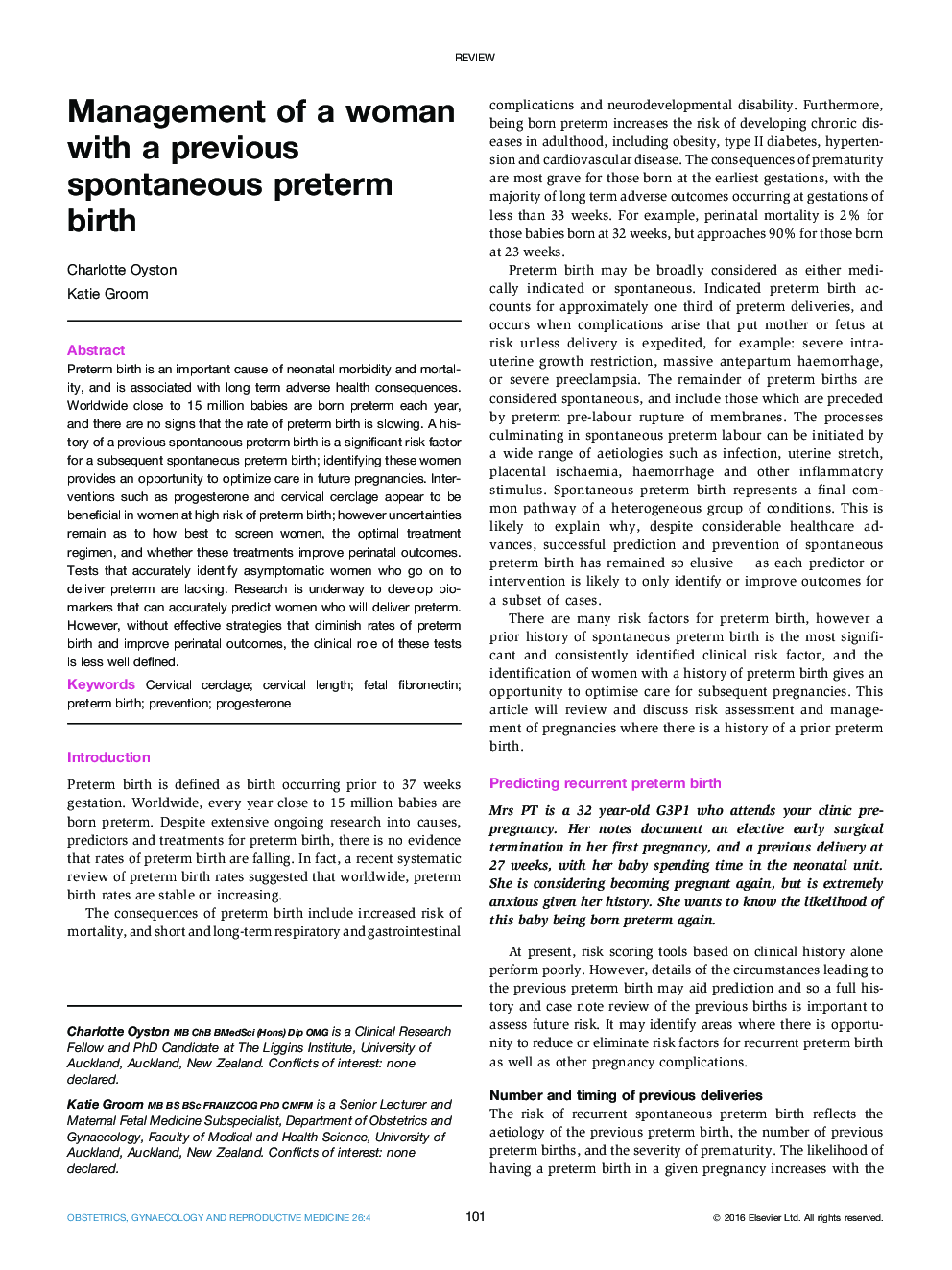| Article ID | Journal | Published Year | Pages | File Type |
|---|---|---|---|---|
| 3966557 | Obstetrics, Gynaecology & Reproductive Medicine | 2016 | 7 Pages |
Preterm birth is an important cause of neonatal morbidity and mortality, and is associated with long term adverse health consequences. Worldwide close to 15 million babies are born preterm each year, and there are no signs that the rate of preterm birth is slowing. A history of a previous spontaneous preterm birth is a significant risk factor for a subsequent spontaneous preterm birth; identifying these women provides an opportunity to optimize care in future pregnancies. Interventions such as progesterone and cervical cerclage appear to be beneficial in women at high risk of preterm birth; however uncertainties remain as to how best to screen women, the optimal treatment regimen, and whether these treatments improve perinatal outcomes. Tests that accurately identify asymptomatic women who go on to deliver preterm are lacking. Research is underway to develop biomarkers that can accurately predict women who will deliver preterm. However, without effective strategies that diminish rates of preterm birth and improve perinatal outcomes, the clinical role of these tests is less well defined.
